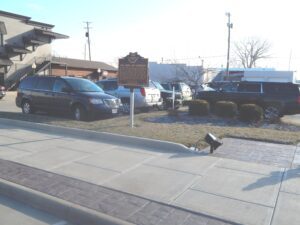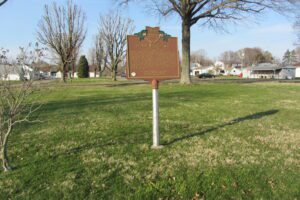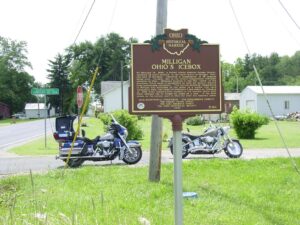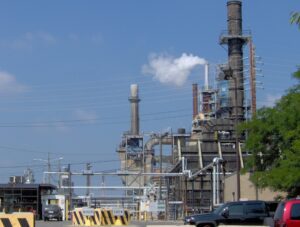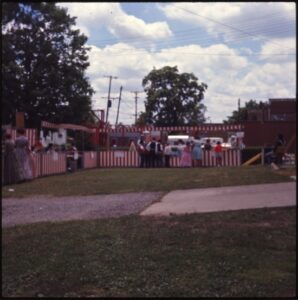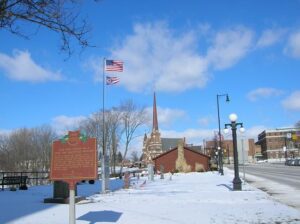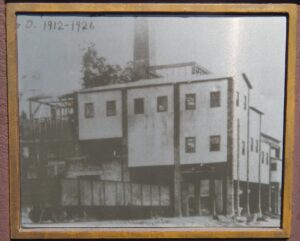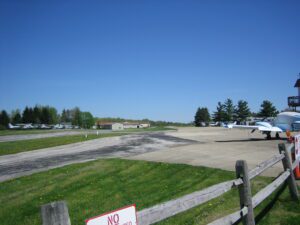, OH
Henry Simon Winzeler, founder of The Ohio Art Company, was born in 1876 in the Winzeler family home just north of this site in Burlington. As a young man, he opened a dental practice in 1900 in the Murbach Building in Archbold on the corner of North Defiance and East Holland streets. Making a dramatic career change eight years later, Winzeler, inspired by an oval mirror in his aunt’s clothing store, started a company to manufacture picture frames. Calling it The Ohio Art Company, venture capital came from Winzeler’s Hub Grocery that he opened in August 1908 located on North Defiance Street. His picture frame company was opened in the Spoerle and Baer Building, a few doors down on the same street. [Continued on other side]
, OH
George Washington Crile was born in 1864 at Chili, in Crawford Township, Coshocton County. Before embarking on his notable medical career, he graduated from Northwestern Ohio Normal School (now Ohio Northern University) at Ada, teaching for two years before becoming principal at Plainfield School. Crile first studied medicine under village physician Dr. A.E. Walker, who loaned him medical books and took him on calls to visit rural patients. Later in life Crile credited his early experience in education in Plainfield as one of the most influential points in his career. (continued on other side)
, OH
On February 10, 1899, a United States Weather Bureau Station, operated by Steve Eveland, in the small hamlet of Milligan, Ohio, now part of McLuney, reported a temperature of 39 degrees below zero. To date, this is the lowest temperature officially recorded in Ohio. Milligan’s location in the flat valley of the Moxahala Creek made it susceptible to cold air masses drained from surrounding elevations. The record-breaking temperature in Milligan was recorded in the midst of a severe cold spell throughout Ohio that began on February 8 and ended on February 15, 1899 when temperatures reached a few degrees above zero. While Milligan can no longer be found on a map, it has been known as the coldest spot in Ohio for over one hundred years.
, OH
Oil became a valuable resource in Ohio when significant quantities were discovered in Lima in 1885. The discovery brought an economic boom to Lima and northwest Ohio. News of the Lima oil field spread, attracting the attention of John D. Rockefeller, co-founder of Standard Oil. Against the advice of his board, Rockefeller invested heavily in Lima crude, despite its high sulfur content and foul odor. Storage tanks and pipelines for the crude sprung up rapidly. Having great faith in the ingenuity of his engineers and scientists, Rockefeller stockpiled the crude and sent Standard’s chief refining specialist, J.W. Van Dyke, to Lima to construct and manage the new Solar Refinery. Together with Herman Frasch, a German chemist, the two men perfected the technique to desulphurize the crude and turn it into quality kerosene and fuel oil.
, OH
The West Liberty area, in the Mad River Valley, was the location of at least seven Shawnee Indian villages. This elevated site was the location of one of those villages. Several septs or divisions of the Shawnee nation lived in this area after being forced from their homes in southern Ohio. In 1786, together with Simon Kenton, Colonel Benjamin Logan’s army destroyed all the Shawnee villages in retaliation for the Indian raids in southern Ohio and Kentucky. Consequently, the remaining Shawnees moved to northwest Ohio near the present-day site of Maumee.
, OH
Old Erie received its original charter on October 19, 1803, from the Grand Lodge of Connecticut. In 1808, the lodge joined with five other Ohio lodges to organize the Grand Lodge of Ohio. The first man to preside as Grand Master of the Grand Lodge of Ohio was Governor Samuel Huntington, a member of Old Erie Lodge. [Masonic Emblem]
, OH
Approximately 150 feet east stood the Hisylvania Coal Company Mine No. 22 tipple, in use from 1912 to 1925. The company name was derived from combining “Ohio” and “Pennsylvania,” home states of its founders. Coal came from the mine portal in small railcars, was cleaned and sized in the tipple, and loaded into gondolas for shipment. The Mine No. 22 tipple had a brick and concrete frame, likely the only one of this type in Ohio. When demolished in 2000, it was one of the last tipples still standing as a reminder of Ohio’s 1880-1920 coal boom and the Hocking Valley coal field’s contribution during this era.
, OH
Daniel E. Weltzien, pilot and hometown son, dreamed of a flying community – one where every family would have a plane in their garage for work or play. In June 1965, the Williams Farm on Acme Hill became a runway with taxiways to every home. Young men and women came for flying lessons, and now traverse the world in space, the military, and commercially. Surviving fire, tornadoes, an earthquake, Ohio winters, and severe crosswinds, students still come here to take their first flight and become pilots. In Ohio, birthplace of aviation pioneers, this is “SKYPARK” THE FLYING COMMUNITY, a first in Ohio because a man dared to dream.


